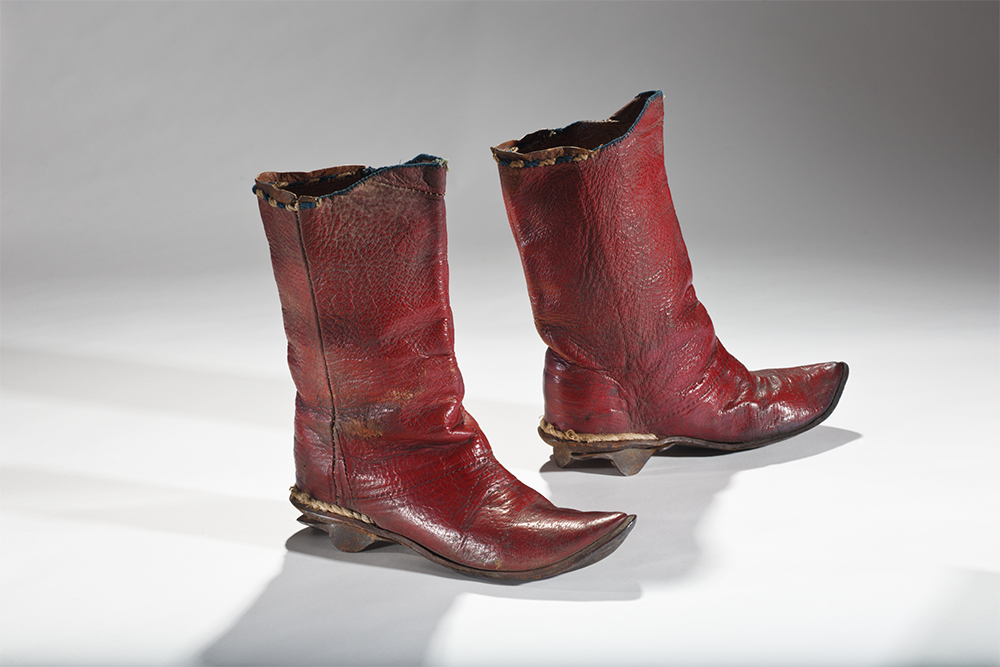Every Tuesday, our Creative Director & Senior Curator, Elizabeth Semmelhack answers your questions for our IGTV series, Ask a Curator! If you’re not on Instagram, you can catch up on the latest here.

Have you ever had an exhibition on cowboy boots?
Not yet. However, we do have wonderful cowboy boots in the collection and I have featured cowboy boots in the exhibition I did, Standing Tall: The Curious History of Men In Heels. I’ve longed been interested in the history of cowboy boots because the cowboy particularly as the role evolved over the course of the latter 19th century and into the 20th century, was a character that was allowed a sartorial excess that a lot of men in other positions were not allowed. So cowboy boots are incredible not only because of the relationship to the history of the heel…why don’t we think cowboys wear high heels? I will never know…but also the fact that there’s so much artistry…amazing artistry that goes in the making of cowboy boots. So keep your fingers crossed, maybe sometime in the future we’ll be able to have that exhibition! -Elizabeth
Learn more information
From the East
The origin of the heel remains to be discovered but it is clear that it was not a European invention. Heeled footwear only emerged in Western Europe around the turn of the 17th century but it has been worn for hundreds of years prior to this throughout Western Asia. Evidence for early Western Asian heels suggests a strong relationship to horseback riding and may have been connected to the innovation of the stirrup. The stirrup profoundly changed horseback riding and made military campaigns more effective, as it enabled riders to steady themselves dramatically improving the effective use of weapons such as the bow and arrow. The heel seems to have a further development of this technology as it allowed the wearer to hook his foot in the stirrup.

This pair of boots is most likely Bedouin from Ottoman Syria. The nomadic Bedouins who lived in the Syrian deserts were renowned horsemen. Indeed, they were the breeders of the famed Arabian horse. Men’s attire featured red boots with colorful tassels and iron heels used for horseback riding. Europeans never adopted this type of heel. These boots originally had a turquoise-colored tassel.
Probably Bedouin, Probably 19th century
